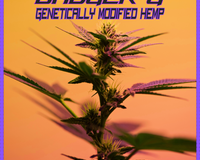Calm. This word may mentally bring you many places, but the majority of the world seems to find the concept of calm synonymous with the scent of lavender, or more specifically, lavender essential oil. Many people will drop a few drops of aromatic lavender oil in a diffuser at nighttime, and many claim it helps them sleep better and avoid stress. Often people will also rub some peppermint essential oil on their temples when they feel a headache coming on, stating that it can diminish -- or at least help diminish -- that pain. Many report essential oils being effective treatments for many daily woes, but often don’t know what science behind these oils makes them effective. Interestingly enough, much of this effect is due to terpenes found within essential oils -- many of which are present in hemp, and are even found in other therapeutic settings such as forest bathing.

Essential oils have a rich history. Today these oils are often found in massage parlours, health food stores, and maybe even in your cabinet, but their origins go much deeper. Aromatic oils have been used in cosmetics and topicals since as early as 4500 BCE in Ancient Egypt, and were recorded as a component of Chinese and Indian medicine in 3000 and 2000 BCE. Even Greece has recorded use of essential oils, and they continued to be used throughout history and into the modern day. There are many reasons people used, and still use, these oils, though not all of the medicinal properties are related to terpenes. That being said, a common component of essential oils have been found to be terpenes.

Research has already shown that terpenes have medicinal properties. For instance, the terpene eugenol, which is prominent in clove oil contains anesthetic, antifungal, and antibacterial properties. The anesthetic properties of eugenol make it a popular choice for people with bug bites, or certain pains. Clove oil has been used by many as an antiseptic, as well, for oral health concerns. Of course, eugenol is far from the only terpene found in essential oils. Other terpenes, like myrcene, have also been found to have antibacterial and antifungal properties. Myrcene is present in hemp as well as pine, juniper, basil and many other plants. There is a significant amount of research supporting the idea that myrcene has sedating effects which may aid in sleep. Terpenes are an integral part of plant medicines, and it’s no wonder humans have been using essential oils for centuries.

Here at DiscoverCBD, we sell many products with terpenes, and even a few with essential oils. All of our full spectrum or broad spectrum products contain terpenes, and we also have products such as our 600mg real terp vape juice and our shatter with terpenes which are made with a blend of terpenes, dominant in myrcene. Additionally, we do have a CBD roll on, which is made with 500mg of CBD isolate, and peppermint essential oil. Many people have reported great results when using the roll on for headaches.

Essential oils are prominent in human history for use as a medicine. It’s amazing how people have been using them, before even knowing about things like terpenes and their properties. Next time you’re walking through your local health food store and walk past the essential oil aisle, consider the history -- and terpenes -- behind essential oils, or feel free to delve into them and check out our roll on!


























